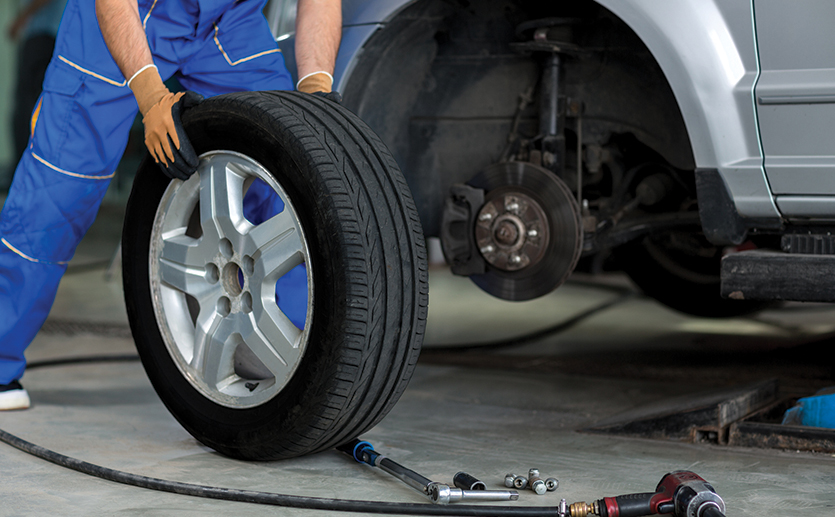Morris Tires: Where GMC Tire Service Meets High Quality
Morris Tires: Where GMC Tire Service Meets High Quality
Blog Article
Tire Solution: The Impact of Weather
When it comes to ensuring optimal efficiency and safety and security on the roadway, comprehending the effect of weather on tire service is vital. From scorching warm to icy roadways, each climate aspect can dramatically affect tire functionality and general driving experience. By diving into the effects of differing climate condition on tires, drivers can obtain useful insights that may improve their automobile's efficiency and durability. In this conversation, we will certainly check out the intricate connection in between weather problems and tire service, clarifying the significance of weather-specific tire maintenance practices and factors to consider.
Warmth and Tire Efficiency
When subjected to high temperatures, tires experience modifications in efficiency that can dramatically affect automobile safety and security and handling. The warmth created from long term driving or hot weather condition conditions triggers the tire rubber to soften, leading to reduced tread life and boosted wear. As the rubber ends up being softer, the tire's grasp when driving decreases, affecting braking ranges and total grip. In severe situations, excessive heat can even cause tire blowouts, posturing a severe security danger to the car and its occupants.

Winter Results
Cold climate problems can have a substantial effect on tire efficiency and safety. In chilly weather, tires might additionally shed air pressure much more swiftly, which can impact taking care of and gas performance.
To alleviate the impacts of winter on tires, it is critical to frequently check tire pressure and inflate them to the maker's suggested levels. Making use of winter or all-season tires designed for winter conditions can also improve traction and grip on icy or snowy roadways. Correct tire maintenance, consisting of routine examinations for wear and damage, becomes a lot more vital during cooler months to guarantee optimum performance and safety.
Rainy Issues Impact
Tires with worn-out footsteps are extra prone to hydroplaning, where a layer of water builds up between the road and the tire surface, leading to loss of grip. To combat this, drivers need to regularly check their tires for ample step deepness and consider investing in tires particularly designed for damp problems.
In addition, wet weather condition can also decrease presence, making it testing for vehicle drivers to see the roadway in advance clearly (GMC Tire Service). In such conditions, it is necessary to adjust driving speeds as necessary and preserve a safe adhering to distance to allow for unexpected stops. Correctly filled with air tires can likewise aid in preserving control on read damp roadways by giving much better handling and grasp
Snow and Tire Security
Snow-covered roadways present one-of-a-kind difficulties for chauffeurs, stressing the importance of proper tire selection and maintenance. When driving in snowy conditions, having the ideal tires can make a considerable distinction in safety and efficiency. Wintertime tires are made with special rubber substances and walk patterns to provide better traction on snow and ice contrasted to all-season tires. The much deeper footsteps and sipes of winter season tires help grip the roadway much better, decreasing the risk of moving and slipping.

In addition, chauffeurs should consider mounting tire chains in severe snowy problems. Tire chains supply additional traction by clutching the snow and ice, enhancing site web stability and control. It is essential to comply with producer instructions when utilizing and setting up tire chains to stop damages to the tires and lorry (GMC Tire Service). By choosing the ideal tires, keeping proper rising cost of living, and thinking about added grip help like tire chains, vehicle drivers can improve their safety and security when navigating snow-covered roads.
Weather-Related Tire Maintenance
Weather-related tire maintenance encompasses a range of methods aimed at making certain optimal tire feature and longevity in different weather condition circumstances. One vital facet of weather-related tire maintenance is tire pressure law. Evaluating tire walk regularly and replacing tires when step wear reaches a specific deepness is crucial for maintaining traction and security in damaging weather condition.
Conclusion
In verdict, weather condition problems have a substantial impact on tire performance and safety and security. From warmth affecting tire pressure and put on to chilly weather minimizing grip, it is important to consider the weather condition when keeping and using tires.
In this conversation, we check that will certainly explore the intricate partnership between weather condition conditions and tire solution, losing light on the relevance of weather-specific tire maintenance techniques and considerations.

Report this page